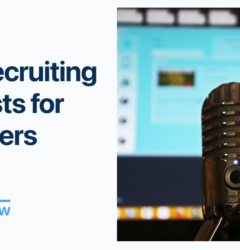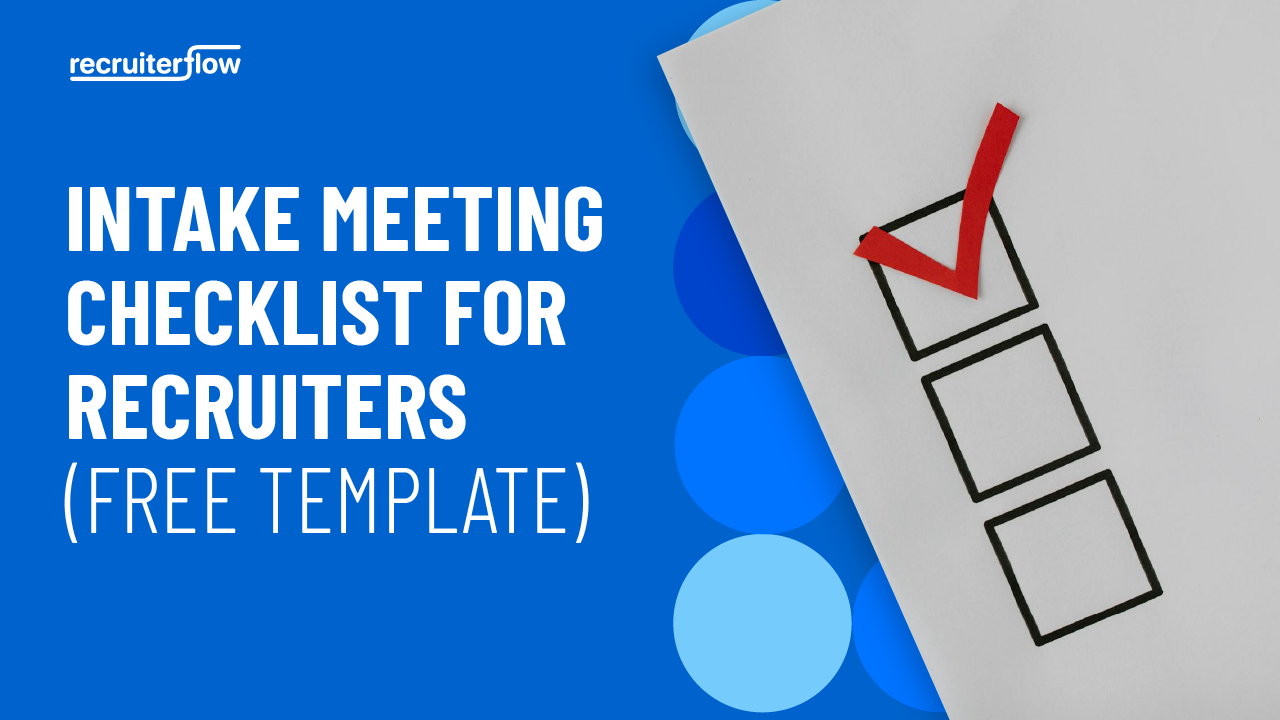
How to conduct an Intake meeting with the hiring manager?

When was the last time you had an intake meeting where you and the hiring manager got out smiling? Intake meetings have become a chore for recruiters and sourcers – because we’ve done it wrong. One of the biggest problems with intake meetings is that both parties are unsure at the end of it. The hiring managers don’t always know whom they want to hire. There is always a discrepancy about what is it exactly they want and how far can they compromise on the perfect candidate. It is also about expectations management. Quite often hiring managers want a unicorn but all data points to the fact that a stallion would do the job and unicorns will never be found.  After interviewing a few best-of-the-breed recruiters and from my own experience, we came up with a list of things one should do in the intake meeting.
After interviewing a few best-of-the-breed recruiters and from my own experience, we came up with a list of things one should do in the intake meeting.
Understanding the role
Understanding the role is the primary purpose of an intake meeting. Here’s how you should approach it.
How to effectively profile the desired candidate?
In the intake meeting, it is your job to ask questions that help the hiring manager to spell out the desired candidate profile more efficiently. The mistake most of us make is to start with the questions like
- How many years of experience should the candidate have?
- What should be education/experience pedigree?
- What is the compensation structure?
- What are the essential and good to have skills for the candidate?
- A general idea about the team and the culture
This is a wrong starting point. Of course, all of this information is important. This framework leaves room for ambiguity and doesn’t help you understand the role. Most importantly it doesn’t help you gauge the hiring manager’s expectations. Here’s how the best recruiters take the intake meeting.
Probe the work not the keywords
Pros don’t jump to keywords. They rather ask the hiring managers the real work profile. What will the hired candidate do every day? What would be performance metrics and what is expected out of them? Instead, they ask: What would the hired candidate achieve in 30 days, 90 days, and 360 days? This gives you a much better idea of who the ideal candidate is for the job, not the hiring manager’s idea of the ideal candidate for the job. The answer to this question will tell you what would it take for the candidate to do the job.
Ask about the people they will work with and not cultural values
Culture is hard to define. Most people define culture as a set of words or a bunch of vague statements like “We like to have fun at work” etc you know the drill. There is a much simpler way to understand a company’s culture. Ask people there about their day! As simple as that!See How I built a team of 40 amazing people in 1 year Who would be the teammate candidate would be working with and what makes them unique in the team?Following this, you should discuss the expected experience, salary range, and cultural aspects of the team. Here’s a simple questionnaire that you should fill out with the hiring manager. It is designed to help you understand the role at a deeper, more insightful level.
- What should the ideal candidate achieve in 30 days, 90 days, and 360 days?
- What will be the career development path for the ideal candidate in the organization in the next 3-5 years?
- What is the compensation structure?
- What are the likely organizations where the ideal candidate currently works?
- What are the skills that candidates should have and what should they achieve?
Pro tip: Answering these questions can lead you to a candidate persona. Download our free candidate persona template and get started.
Set expectations and timeframe
Set expectations and timeframe The hiring manager may not always be aware of the market landscape. It is important that you lay out the market landscape for their needs and set up expectations. You need to inform the hiring manager about how difficult would it be to hire the person that they want. You also need to create a timeline and approximate pipeline numbers with your hiring manager. In setting up expectations, stay on the same page about the following things.
- How difficult is it to hire the right candidate?
- What are the channels and costs associated with this
- What would be an approximate timeline template?
- What would the compensation expectation be for the right candidate
- Share the expected pipeline number. Your approximate number on a number of phone screens and the number of interviews will help the hiring manager visualize your effort. It will also help to hire managers to estimate their own efforts and time commitment for this.
- Use your past experience to inform the hiring manager of all of the above issues
Also check, 10+ Actionable Tips To Improve Your Candidate Experience
Get time commitment from the hiring manager
Once you get a requisition, you try plucking out the stars for the position. You engage the passive candidates and convince them to get on a call with great difficulty. However, once you submit the candidates, the hiring manager takes forever to respond and the candidate loses interest. This is the story of every recruiter out there! Another way you can avoid this is by getting a time commitment in advance from your hiring manager. Get your hiring manager and the rest of the hiring team to commit to a set number of interviews and feedback calls every week. Here’s what a sample intake form would look like.
Sample intake form
For an exercise, I am sharing a sample form with you. Let’s try it for a UX Design Lead you are trying to hire.
What should the ideal candidate achieve in 30 days?
- The ideal candidate would understand the current design process and will be completely integrated with product, design, and engineering teams.
- The candidate would grasp the current design language and how we see it evolving in the future.
- You will collaborate with the product marketing team to push one campaign out of the door and be in creative control of the campaign
What should the ideal candidate achieve in 90 days?
- Conduct 1on1 meetings with the design team
- Take charge of Performance Reviews and OKRs of your team
- Represent UX team in weekly all-hands meetings.
- Create a plan to evolve our design language for the next 3 years, keeping up with the latest design trends.
Also, check our Step by Step Guide to Design Beautiful Careers Page
What would the ideal candidate achieve in 360 days?
- A new and improved design language is ready for the product, marketing, and everything in between
- UX team has evolved and grown to 8 members and you keep your hiring pipeline healthy and churning
- You have developed a clear design evolution plan and have an execution strategy in place
- You are a member of the internal product team that takes charge of final product decisions
What would the recruiting process and timeframe look like?
The recruiting process would involve the following steps.
- Sourcing and outreach – 130 candidates
- Phone screen – 40 candidates
- Take-home assignment – 30 candidates
- Submitted to HM and Phone/Skype interview with the hiring manager – 20 candidates
- On-site interview (3 rounds of interviews) – 6 candidates
- Reference check – 1 candidate
- Offer – 1 candidate
We expect to source around 130 candidates and reach out to them. The entire process, including the start of search and outreach, should take close to 7 weeks.
Also, check Cold email templates for recruiters that work
Commitment is needed from the hiring team and the hiring manager
It would need about 4 hours per week from the hiring manager over the next 7 weeks to review submittals, take-home assignments, and talk to the candidates. The time commitment would go up and the nature of the activity change near the closing stage as we would need to collaborate to get the candidate to accept the offer.
It’s as simple as that. We would love to know if you have any hacks you employ to figure out what hiring managers (really) want.Book a free demo!
Recruitment





Manan Shah